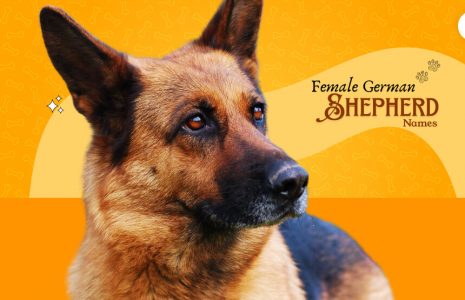Is Blue Heeler (Australian Cattle Dog) Smart Dog? Breed Guide & Top Facts


According to Karen Shaw Becker, the author of Real Food for Healthy Pets, “Australian cattle dogs are intelligent working dogs as well as a herding breed, so they need jobs to do daily. As their guardian, if you don’t create positive, engaging, and appropriate work for them, they’ll create their own destructive tasks – like dismantling the couch.”
Also known as Blue Heeler, the Australian Cattle Dog is known for their efficiency, agility, and brainpower. They not only run around you in circles but also herd up and down across the driveway and sidewalk, then jump inside your car.
If you wanna know more about this amazing, working dog, then scroll down and read more about this Australian Cattle Dog or the Blue Heeler.
Breed Overview

Known for their “High energy levels and active minds!” the Blue Heeler is a great working dog. But before we get to know more about this dog, here are a few important details you should know about.
| Kingdom | Animalia |
| Class | Mammalia |
| Order | Carnivora |
| Phylum | Chordata |
| Family | Canidae |
| Genus | Canis |
| Scientific Name | Canis Lupus |
| Height | 18 – 20 inches |
| Weight | 35 – 50 pounds |
| Life Span | 12 – 16 years |
| Breed Size | Medium (26 – 60 lbs) |
| Good With | Families and Children |
| Temperament | Aloof, Playful, Willful and Outgoing |
| Intelligence | High |
| Shedding Amount | Seasonal |
| Exercise Needs | High |
| Energy Level | Active |
| Barking Level | If needed. |
| Drool Amount | Low. |
| Breed Group | Herding. |
| Coat Length/ Texture | Short. |
| Colors | Gray, blue, red. |
| Patterns | Speckled, ticked, flecked and merle. |
| Other Traits | Very territorial, easier to groom, easily trained, tolerate hot & cold weather, prey drive is high, highly loyal, great hiking partner. |
Physical Appearance Of The Blue Heeler

With big oval brown eyes that sparkles when these dogs are in full attention, their ears are also raised and tapered at the same time. The blue heeler dogs will give you their whole attention when they want to talk to you. This habit is to know what their next job is.
Australian cattle dogs have curved and broad head with sharp and short muzzles. They also have a slightly bushy tail that hangs loose behind their hindquarters. With a lean body, the dog seems full of energy, with a double coat beneath them.
These dogs are not brawny or stocky but have solid frame with a proportioned body that is full of endurance and power. With a bristly and short outer coat, the undercoat is soft that provides temperature and insulation.
Blue heeler dogs represent the color of a multicultural heritage, with the colors of a collie, Dalmatian, and even an Australian dingo. The two coats of the blue heeler dogs are not the same, but the only similar element is that they have color patches all over the coats.
Temperament & Behavior

It is important to start obedience training for the Australian cattle dog, but these dogs highly require positive reinforcement and guidance at the same time. Australian cattle dogs are known to be very smart and intelligent, they are also great at problem-solving and are known to take great responsibilities as a guard.
With normal training for obedience, agility, and tracking games, the dogs are taught to have leadership qualities and to do important jobs. They also have a strong physical and mental game and health.
To train the blue heeler dogs, you can try out a doggie training course that has tunnels, bean poles, ladders, and high jumpers. With the amount of agility that these dogs have, the blue heeler dogs can finish the obstacle course in just about 30 seconds.
But as for their personality, cattle dogs are known to be affectionate, pleasant, and loyal to their owners and family members. At the same time, Australian cattle dogs are not easily accepting of any strangers.
And that is the only time you will hear them give out a sharp bark. They are always on high alert and will always give a quick sweep of the whole territory if they feel any kind of threat to their family.
Care & Health

Australian cattle dogs are known to have a thick double coat, but the coat is functional and short. The coats are sleek and neat, and at the same time, they are without any oils. So it is quite important to have weekly grooming sessions and brushing.
These dogs tend to smell quite good at the same time, even though they require to have a bath once every month. Most double-coat dogs have a blowout twice each year, as they shed twice a year, mainly during fall and spring.
So these blue heeler dogs require intense care and grooming at the same time, it is important to comb and brush the dead hair off the dog more than once each week. But at the same time, proper dental care is very important for the dog to have healthy gums and teeth and, at the same time, fresh breath.
Blue heeler dogs are known to live in one of the most harshest and unpredictable environments in the world. These dogs tend to tolerate extremely cold and hot climates, this is why the dogs are bred with intense resilience.
But these blue heeler dogs are known to have certain medical conditions, according to Becker, “In addition to congenital hereditary deafness, Australian cattle dogs who have puppies should be screened for hip, eye and heart problems, as well as patellar luxation, or slipped kneecap. They’re also prone to a heritable eye condition called progressive retinal atrophy. Make sure a puppy’s parents have been screened for these diseases. Please don’t buy a puppy until you personally review copies of these test results.”
What Are Some Common Health Issues or Concerns Specific to the Blue Heeler Breed?

Blue Heelers, also known as Australian Cattle Dogs, are generally robust and hardy, but they are prone to certain health issues. Here are some common concerns specific to this breed:
Hip Dysplasia
It is a genetic condition where the hip joint doesn’t fit properly into the hip socket, leading to arthritis and pain. You will notice signs like limping, difficulty rising, and decreased activity. Weight management, physical therapy, and, in severe cases, surgery.
Progressive Retinal Atrophy (PRA)
This is a group of genetic disorders that lead to gradual vision loss and eventual blindness. You will notice early symptoms like night blindness, dilated pupils, and bumping into objects.
There is no cure, but supportive care can help slow progression.
Deafness
Congenital deafness, often affecting one or both ears, is a common health issue. You will see signs of deafness like lack of response to sounds, and not waking up to loud noises.
Atopic Dermatitis
It is a chronic skin condition caused by allergies. Itching, redness, and hair loss are some of the common symptoms of this condition. Medicated baths, topical treatments, and dietary adjustments can help your dog to feel better.
Liver Problems
These include conditions like portosystemic shunt (PSS) where blood bypasses the liver. Common symptoms are poor growth, seizures, and disorientation. Dietary changes and, in some cases, surgery is required to manage the condition.
Skin Tumors
These are growths on the skin, including mast cell tumors. Some of the common symptoms are lumps, bumps, and unusual growths. They can be easily managed through regular vet check-ups and, if necessary, surgical removal.
Regular veterinary check-ups and a healthy lifestyle can help manage these issues and ensure your Blue Heeler lives a happy, active life.
Pros & Cons Of Owning An Australian Cattle Dog
Now that you have got to know a lot about the Australian cattle dog or the blue heeler, are they great as pets? That is what we are here to know. To know more on why you should or shouldn’t get a blue heeler for your own.
| Pros | Cons |
| They are highly loyal dogs. | They need a lot of exercise. |
| They don’t bark until and unless it is necessary. | Tend to be unhappy when they are left alone. |
| The blue heelers are quite pet friendly. | These are not apartment dogs. |
Wrapping Up!
Now that you are well aware of the facts and guides of the blue heeler dog, then you should definitely think the article is quite helpful for you. So if you wanna know more about different dog breeds, then follow our website to find great articles on your favorite animals. If you liked this article, then give us a like and comment down below whether you would like to own a blue heeler dog or not.
Read Also:








Leave A Comment